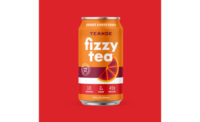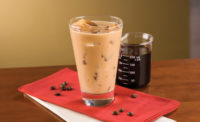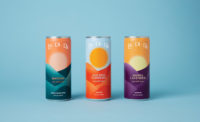Editor's Note: To prepare for this article, I conducted some of my own consumer research. I spent numerous afternoons in Chicago area coffee shops-Starbucks, Caribou and some local joints. Among my findings was the observation that seldom is there not a person ordering a beverage in any of these establishments. In fact, during early-morning hours, lines with 10 or more customers are quite common. I also learned that at select Starbucks, chai is ordered 10% of the time. I was very surprised. I felt inclined to learn more about chai sales and asked a few baristas how often soy is requested in chai, and was told, on average, about half the time. And, this final noteworthy observation might come as a shocker to you, as it did me. Kids and teens are buying coffee drinks, too. I saw a seven-year-old down a Caramel Frappuccino® and a group of high school students go through a few rounds. Parents who purchase hot chocolate or chocolate milk from Starbucks likely do not know that these drinks contain a shot or so of mocha syrup. With that said, a lot, and I mean a lot of milk is used to make these drinks. In many drinks, there's more milk than coffee. Add in the whipped cream some of these beverages are topped with, and there's a lot of dairy being moved through coffee and tea houses. Indeed, dairy serves as an ideal base for coffee and tea.
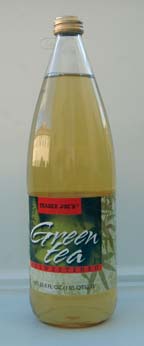
When it comes to working with coffee ingredients, the least expensive coffee flavoring ingredient is freeze-dried or powdered coffee. An advantage is that it can be diluted to whatever strength is required at the time it is being used. It can be stored at ambient temperature and has a lengthy shelflife. The downside is that such products deliver an acidic or bitter aftertaste, and a formulator needs to mask the bitterness, especially in cold beverages, with other flavors, thickeners or sweeteners.
Extracts, also sometimes called concentrates, are used more often because they deliver a higher-quality coffee flavor. They are available in a wide range of qualities with accompanying costs. However, because today's discerning coffee consumer wants the best, extracts are a popular formulating choice.
Basically, extracts are made by brewing coffee and subsequently reducing the water in the resulting brew. Extracts come in a variety of flavors and strengths. For example, espresso extract imparts a very dark roasted flavor, close to a smoky note. Cappuccino extract imparts rich, creamy coffee notes that can have a hint of cinnamon and chocolate. Basic coffee extract provides coffee flavor from freshly roasted coffee beans.
Flavor houses also offer coffee flavorants, some based on real coffee, and others simply made using flavor science. Such coffee flavors can be used alone or to further enhance the aforementioned coffee ingredients.
"There are many choices available for coffee-flavored products, with the most successful possessing rich, fresh-brewed notes," says Noreen Carroll, director, food ingredient sales, Autocrat Inc., Lincoln, R.I. "Such profiles remind the majority of the adult population of their freshly brewed cup in the morning."
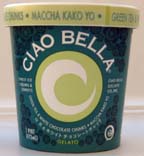
Screaming for tea ice cream
Tea, too, is being added to more and more dairy these days. For example, chai, a centuries-old Asian beverage, is a blend of milk, fine black teas, honey and a variety of spices, which vary by region and culture. Typically, cardamom, ginger and even pepper are used. Chai has traditionally been served hot, but since being modernized, is frequently consumed cold, particularly in the United States.Many consumers consider chai to be a hybrid cross between coffee and tea. It contains the rich creaminess of coffee but with the health benefits of drinking tea. Milk-based ready-to-drink chai is available by select marketers around the country. The business is small but growing.
What is truly becoming a booming business is green tea ice cream. Green tea refers to plucked tea leaves that are not fermented. Rather, the leaves are steamed or otherwise heated immediately after plucking to prevent the fermentation that makes black tea. The leaves are then rolled and dried.
Green tea is one of the world's oldest and most popular beverages, yet it is still being discovered by Americans. Because it is not as highly processed as black tea, green tea is a rich source of antioxidants, which contributes to its healthful halo. Researchers have found that green tea can help prevent cancer and other degenerative diseases.
Recently, Spanish and British scientists have shown that a catechin called epigallocatechin allate (EGCG) in green tea prevents cancer cells from growing by binding to a specific enzyme. Professor Roger Thorneley of the John Innes Center in Norwich, England, told Reuters that "We have shown for the first time that EGCG, which is present in green tea at relatively high concentrations, inhibits the enzyme dihydrofolate reductase, which is a recognized, established target for anti-cancer drugs. This is the first time, to our knowledge, a known target for an anti-cancer drug has been identified as being inhibited by EGCG."
In addition to being brewed and consumed as a beverage-hot or cold-green tea can also be added to ice cream mix. Green tea ice cream has been available in Asia for many years and is currently sold domestically in natural and specialty stores. This flavor is expected to become mainstream within the next few years because of the healthful halo surrounding green tea.
"When formulating green tea ice cream, it is important to realize that not all green tea is the same. In fact, often times the extract or infusion of green tea is not even used," says Scott Smith of Taiyo International Inc., Minneapolis. "Rather, product developers typically turn to the finely milled leaf of green tea known as matcha powder because of its natural robust flavor and vibrant green color." About 2% matcha powder is used to formulate authentic green tea ice cream. n
For reprints of this article, contact Jill DeVries at
248/244-1726 or devriesj@bnpmedia.com.
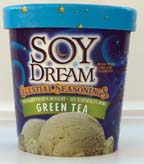
Sidebar: First Vanilla, Then Chocolate, Now Coffee
In the past few years, global overproduction of coffee has resulted in extremely low coffee bean prices; however, that's all changing now. Coffee is trading at a five-year high, and there's no slowdown in sight.The reason for this increase comes down to simple economics-demand is outstripping supply. Coffee bean growers, frustrated by the low prices they were being paid, have now limited crops to make their harvest more valuable. In addition, recent dry weather in Brazil is impacting supply, as is December's tsunami.
Prices have already risen about 60%, and these higher coffee prices have started percolating through to coffee marketers. Indeed, no doubt, it will impact the coffee ingredient business.
So, what does this information mean to dairy manufacturers who use coffee ingredients to make the ever-so-popular ready-to-drink coffee-milk beverage, or even coffee-flavored ice creams? First of all, don't stop making these products. Their popularity, particularity the beverages, is at an all time high. Second, like other regularly traded commodities, fluctuating prices are to be expected. Furthermore, compared to other beverages, coffee has always been considered a relatively inexpensive drink, and continues to be.
Coffee consumers will no doubt be very willing to dip a little further into their pockets to get their daily fix. The dairy industry has managed to get through pricing issues with milkfat, as well as the industry's two most popular flavors-vanilla and chocolate. High coffee bean prices are just one more milestone.
